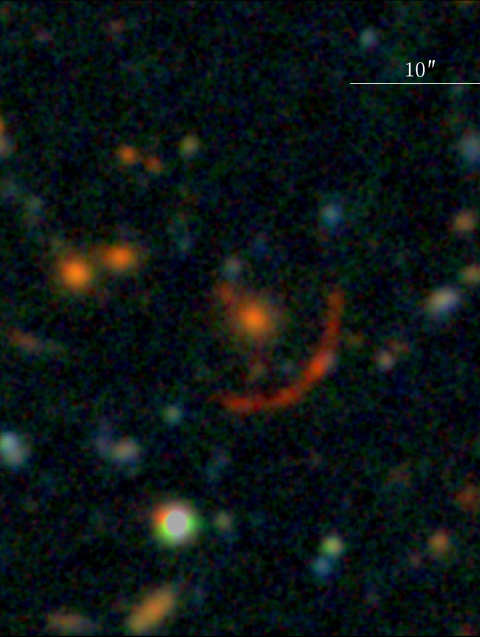The night sky is a natural time machine, used by cosmologists to explore the origins and evolution of the universe. Reaching into the depths of the past, a class of undergraduate students at the University of Chicago sought to do the same—and uncovered an extraordinarily distant galaxy in the early cosmos.
Light emitted from faraway celestial objects takes a long time to reach Earth-side observers. That means the stars and galaxies we see in the sky appear to us as they would have existed millions, or even billions, of years ago.
The discovered galaxy’s light comes from a time when the universe was only 1.2 billion years old, about one-tenth of its current age. By this point, the young galaxy had already accumulated a mass impressively comparable to the present-day version of our home galaxy, the Milky Way.
“This galaxy that we’ve observed, by looking out and back into the past, is already grown up. It’s already formed almost a Milky Way’s worth of stars,” said Michael Gladders, a professor in UChicago’s astronomy and astrophysics department. “It’s quite mature, but at a much earlier stage in the Universe.”
The discovery was a climactic milestone in the first iteration of a field course developed for the new astrophysics major offered by UChicago. Students in the two-quarter class formed a new research collaboration, COOL-LAMPS, and surveyed public imaging databases in search of lensed galaxies. The remarkable find was confirmed by observations from ground-based instruments: the Magellan Telescopes in Chile and the Gemini North telescope in Hawaii.
‘Nature’s telescope’
A lensed galaxy is one whose emitted light has been bent by the gravity of a massive object lying between the galaxy and the point of observation. This effect, known as gravitational lensing, creates a distorted, arc-like image of the galaxy with an intensely magnified brightness.

Gladders, who taught the field course in the first half of 2020, calls gravitational lensing ‘nature’s telescope.’ “It’s a rare, peculiar form of focusing and magnification that allows us to study galaxies with much greater detail than we ever normally could,” he said.
Light from the discovered galaxy was so strongly magnified by a cluster of other galaxies in its foreground that it rivaled images of the sky taken from space.
“This was a ground-based telescope taking data of this absolutely beautiful arc,” said Gourav Khullar, a UChicago PhD candidate who served as teaching assistant for the field course and is first author of the paper describing the findings. “It’s approximately a hundred times brighter than classical images of similarly distant galaxies from the Hubble Space Telescope!”
A comprehensive study of the stellar populations of this galaxy, undertaken by the student collaborators, concluded in the realization that this was the brightest lensed galaxy ever observed in this time period of the early universe.
Without gravitational lensing, though, the distant galaxy would appear much dimmer, if visible at all.
“The arc has been magnified by the intermediate lens in such a way that it’s extremely bright,” said Khullar. “But an un-lensed version of the galaxy wouldn’t look like this; it would be much fainter and not at all detectable by current ground-based facilities.”
Pushing through the pandemic
The field course was designed to provide astrophysics majors with a real-life, cutting-edge research opportunity. Originally modest in ambition, Gladders convinced the department and the College to invest in a complete field experience, including a visit to the Magellan Telescopes to participate in astronomical observing time over spring break.